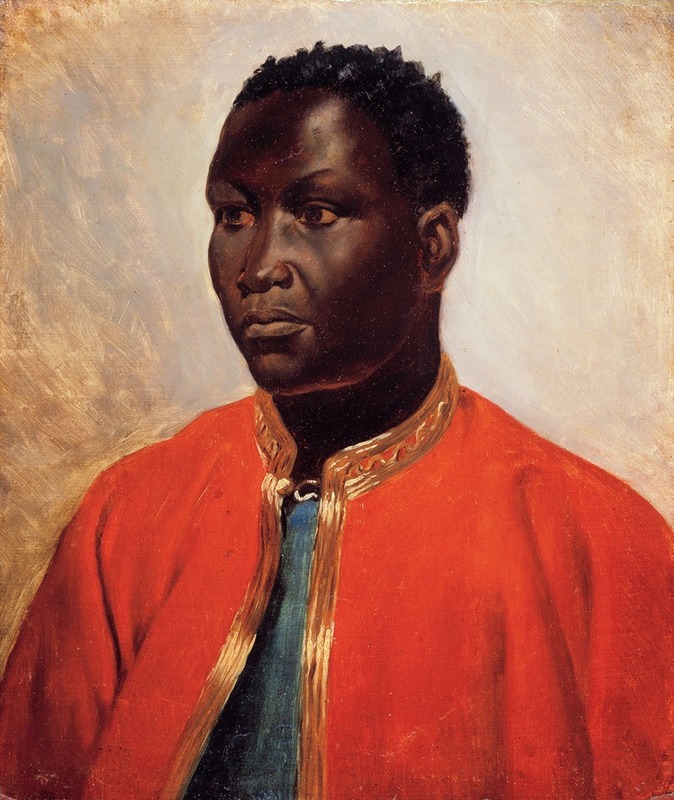
Portrait of a Negro
A hand-painted replica of Théodore Géricault’s masterpiece Portrait of a Negro, meticulously crafted by professional artists to capture the true essence of the original. Each piece is created with museum-quality canvas and rare mineral pigments, carefully painted by experienced artists with delicate brushstrokes and rich, layered colors to perfectly recreate the texture of the original artwork. Unlike machine-printed reproductions, this hand-painted version brings the painting to life, infused with the artist’s emotions and skill in every stroke. Whether for personal collection or home decoration, it instantly elevates the artistic atmosphere of any space.
"Portrait of a Negro" is a painting by the French artist Théodore Géricault, created around 1820. Géricault is renowned for his dynamic and emotive style, which played a significant role in the development of the Romantic movement in art. This particular painting is an example of his interest in capturing the human condition and exploring themes of social justice and individual dignity.
The painting depicts a Black man, whose identity remains unknown, against a neutral background. The subject is portrayed with a dignified and contemplative expression, which is characteristic of Géricault's empathetic approach to his subjects. The artist's use of light and shadow highlights the man's facial features and expression, drawing the viewer's attention to his thoughtful gaze. The brushwork is both precise and expressive, capturing the texture of the man's skin and the fabric of his clothing with remarkable detail.
Géricault's choice to paint a Black man during this period is significant, as it reflects his interest in the social issues of his time, including the abolitionist movement. France had abolished slavery in its colonies in 1794, although it was later reinstated by Napoleon in 1802 and finally abolished again in 1848. The painting can be seen as a reflection of the complex attitudes towards race and slavery in early 19th-century France. Géricault's work often challenged societal norms and conventions, and this painting is no exception, as it presents the subject with a sense of individuality and humanity that was not commonly afforded to Black individuals in art at the time.
The painting is also notable for its technical execution. Géricault was known for his ability to convey emotion and character through his portraits, and "Portrait of a Negro" is a testament to his skill in this regard. The subtle use of color and the careful rendering of the subject's features demonstrate Géricault's mastery of the medium and his commitment to realism.
"Portrait of a Negro" is housed in the Louvre Museum in Paris, where it is part of a larger collection of Géricault's works. The painting is often studied in the context of Géricault's broader oeuvre, which includes his most famous work, "The Raft of the Medusa." Like many of his paintings, "Portrait of a Negro" reflects Géricault's interest in the human experience and his ability to convey complex emotions through portraiture.
Overall, "Portrait of a Negro" is an important work that highlights Théodore Géricault's contributions to the Romantic movement and his commitment to exploring themes of social justice and human dignity. Through this painting, Géricault offers a powerful commentary on the issues of race and identity, making it a significant piece in the history of art.


















